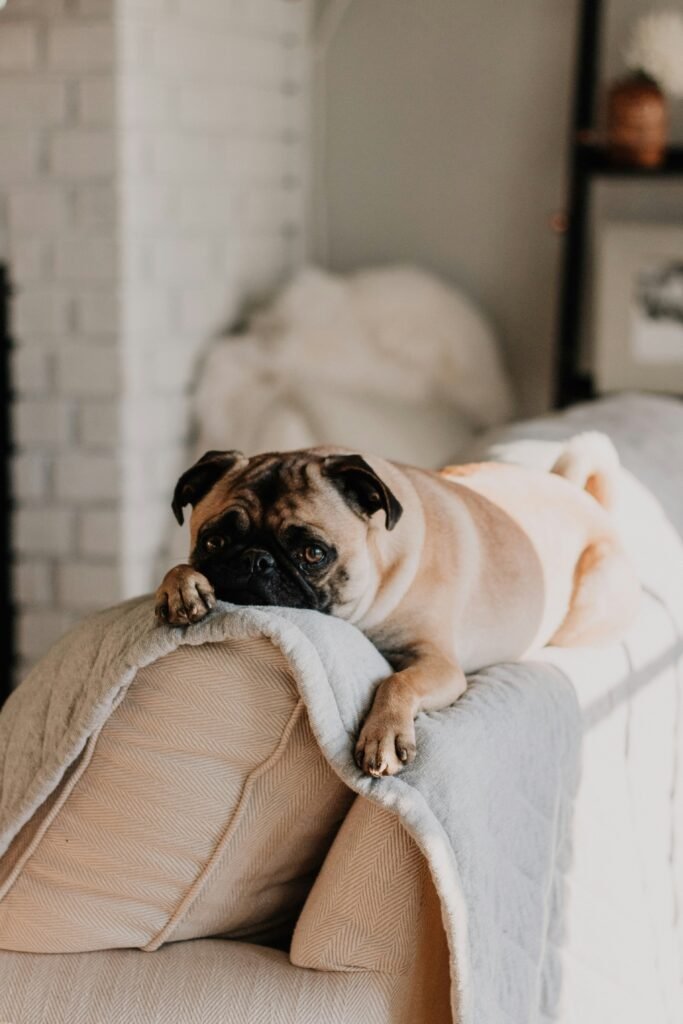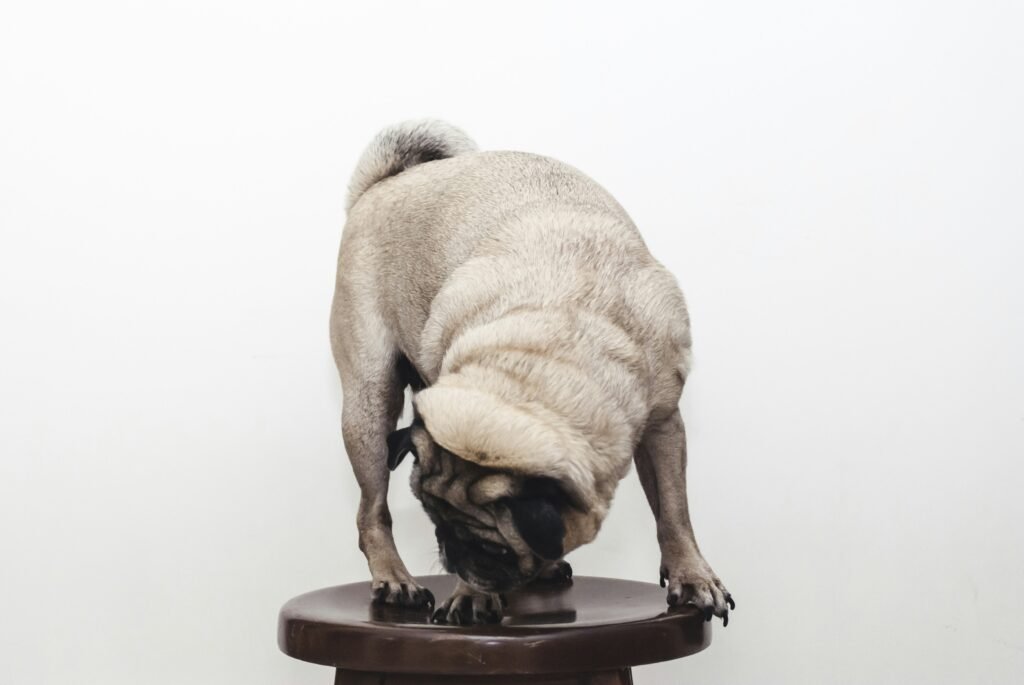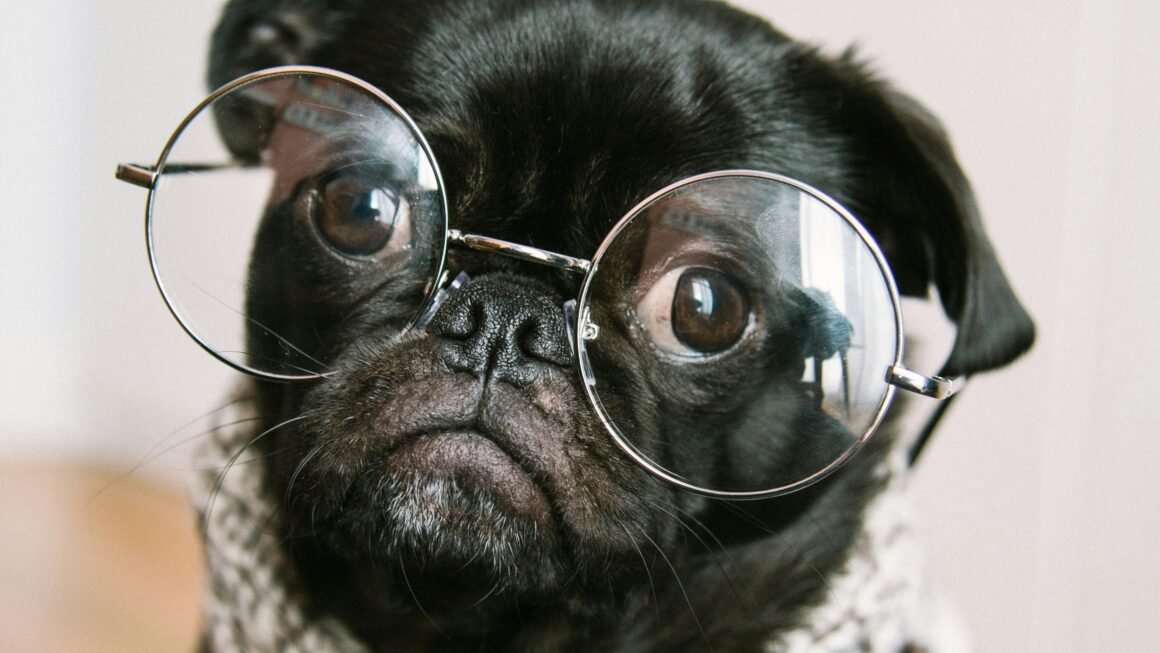Have you ever wondered why pugs have such unique behavior and temperament? In this article, we will unravel the mysteries behind these adorable little dogs. From their quirky personalities to their stubbornness and love for attention, pugs continue to fascinate dog lovers all over the world. By delving into their history and exploring their genetic traits, we will gain a deeper understanding of what makes pugs tick. So, if you’re curious about these lovable creatures and want to learn more about their behavior and temperament, read on!

This image is property of images.unsplash.com.
1. Basic Characteristics of Pugs
Physical appearance
Pugs are small and compact dogs with a distinctive appearance. They have a rounded head with a short muzzle and a wrinkled forehead, giving them a cute and adorable expression. Their large, expressive eyes are prominently displayed on their face, and their ears are soft and floppy. Pugs have a square-shaped body, with a deep chest and strong legs. Their tail curls tightly over their back.
Size and weight
Pugs are classified as a small breed, typically weighing between 14-18 pounds (6-8 kilograms). They have a compact and sturdy build, which contributes to their overall adorable look. In terms of height, pugs typically stand around 10-11 inches (25-28 centimeters) at the shoulder.
Coat
The pug’s coat is short and smooth, providing a glossy and neat appearance. They have a fine, soft undercoat and a coarser topcoat. The color of their coat can vary, with fawn and black being the most common. Some pugs may also have a silver or apricot coat. Pugs are known for shedding, so regular brushing is necessary to keep their coat healthy and to minimize loose hairs around the house.
Facial features
One of the most distinct features of pugs is their facial expression. Their large, round eyes are filled with warmth and affection, which adds to their friendly and lovable nature. Pugs also have a short, flat muzzle, which can sometimes lead to respiratory issues. Additionally, their wrinkled forehead gives them a unique and charming look. It is important to keep their facial wrinkles clean and dry to prevent skin infections.
2. Origin and History of Pugs
Ancient origins
Pugs have a rich history that dates back thousands of years. They are believed to have originated in ancient China, where they were highly esteemed by Chinese emperors. These dogs were often seen accompanying members of the imperial court and had a reputation for being loyal and affectionate companions.
Chinese history
In Chinese history, pugs were regarded as symbols of good fortune and were even used as living ornaments. They were bred selectively to have a specific appearance, with their facial wrinkles said to resemble Chinese characters. Pugs were prized for their charming and playful nature, often bringing joy and laughter to the households they inhabited.
European adoption
Pugs gained popularity beyond China when traders and explorers brought them to Europe in the 16th century. European nobility quickly fell in love with these unique dogs, and pugs became a cherished breed among royal families. They were often seen in paintings and tapestries, forever immortalizing their place in European history.
Pugs in popular culture
Throughout history, pugs have made appearances in various forms of popular culture. They have been depicted in art, literature, and even in movies such as “Men in Black” and “The Secret Life of Pets.” The pug’s charming and lovable nature continues to capture the hearts of people all around the world.

This image is property of images.unsplash.com.
3. Pug Behavior Traits
Friendly and sociable nature
Pugs are known for their friendly and sociable nature. They love being around people and enjoy socializing with both familiar faces and new friends. Pugs make excellent family pets and get along well with children, other dogs, and even cats. Their amicable and gentle demeanor makes them a great choice for households looking for a companion that is easy to get along with.
Affectionate but independent
While pugs love being around their human companions, they also value their independence. They are an affectionate breed that craves attention and companionship, but they also appreciate their alone time. Pugs may sometimes exhibit a stubborn streak and prefer to do things on their terms. However, their independent nature does not make them any less loving or loyal to their owners.
Playfulness and energy levels
Pugs are incredibly playful and have a zest for life. They have a youthful energy that seems to last well into adulthood. Pugs enjoy engaging in playtime activities and will happily join in on a game of fetch or tug-of-war. However, it is important to note that pugs may not have the same endurance as some other breeds and may tire more quickly. Regular exercise and mental stimulation are essential to keep them happy and healthy.
Attention-seeking behavior
Pugs are attention seekers and love to be the center of attention. They will often follow their owners around the house, seeking affection and companionship. Pugs thrive on human interaction and can sometimes become anxious if left alone for long periods. This attention-seeking behavior can be endearing, but it is important to strike a balance and ensure that they are not overly dependent on their owners.
4. Pug Temperament
Adaptability to different environments
Pugs are highly adaptable dogs and can thrive in various living environments. Whether you live in an apartment or a house with a yard, pugs can adjust to different spaces. However, they are more suited for indoor living due to their sensitivity to extreme temperatures. Pugs are sensitive to heat and may struggle in hot climates, so it is important to provide them with a cool and comfortable living environment.
Temperament with children and other pets
Pugs have a natural affinity for children and are often referred to as excellent family dogs. They are gentle and patient, making them a great playmate for kids. Pugs can also get along well with other pets, including dogs and cats, if properly socialized from a young age. Introducing your pug to new pets gradually and providing positive experiences can help foster good relationships.
Intelligence and trainability
Pugs are intelligent dogs and can quickly pick up on commands and routines. However, they can also be stubborn at times, which may present challenges during training. While pugs are eager to please their owners, they have an independent streak that can make them less obedient than some other breeds. Consistency, patience, and positive reinforcement techniques are crucial in training a pug successfully.
Stubbornness and assertiveness
Pugs are known for their stubbornness and can be quite assertive when they want something. This can make training a pug a bit more challenging compared to other breeds. It is important to establish yourself as the pack leader and set clear boundaries from the beginning. Providing firm yet gentle guidance will help your pug understand the rules and expectations within the household.

This image is property of images.unsplash.com.
5. Common Behavioral Issues in Pugs
Separation anxiety
Pugs are known to form strong bonds with their owners and may experience separation anxiety when left alone for extended periods. This anxiety can manifest in behaviors such as excessive barking, destructive chewing, and house soiling. To prevent separation anxiety, it is important to gradually acclimate your pug to being alone and provide them with engaging toys and activities to keep them occupied.
Excessive barking
Pugs are not particularly yappy dogs, but they can be prone to excessive barking if they feel anxious or neglected. Proper socialization and addressing any underlying anxiety issues can help minimize excessive barking. It is important to understand that pugs may use barking as a way to communicate their needs or express their excitement, so finding a balance is essential.
Chewing and destructive behavior
Like many other dogs, pugs have a natural urge to chew, especially during the teething phase. However, if this behavior persists into adulthood or becomes destructive, it may indicate underlying issues such as boredom or anxiety. Providing appropriate chew toys, regular exercise, and mental stimulation can help redirect their chewing behavior and prevent destructive tendencies.
Housebreaking challenges
Some pugs may experience difficulties with housebreaking, especially during their puppyhood. They may have accidents indoors or struggle to understand where they should relieve themselves. Consistency and positive reinforcement techniques are key in housebreaking a pug. Establishing a regular routine, rewarding them for appropriate elimination, and being patient will help them learn proper bathroom etiquette.
6. Pug Communication
Vocalizations
Pugs are not particularly vocal dogs, but they can make a range of sounds to communicate their needs and emotions. They may bark, whine, snort, or even make grunting noises. Each vocalization may have a different meaning, and it is important to pay attention to the context and tone of their vocalizations to understand what they are trying to convey.
Body language
Pugs, like all dogs, communicate through their body language. They use different postures, facial expressions, and tail movements to express their emotions. A wagging tail or a relaxed and open posture usually indicates a happy and content pug, while a tucked tail or raised hackles may indicate fear or aggression. Understanding your pug’s body language will help you better understand their needs and emotions.
Understanding pug cues and signals
Pugs have various cues and signals that they use to communicate with their owners and other dogs. They may use head tilts, eye contact, or even licking as a way to convey their intentions or to seek attention. It is important to observe and familiarize yourself with your pug’s unique cues and signals to build a stronger bond and enhance your communication with them.
Emotional expressions
Pugs are incredibly expressive dogs, and their facial expressions can reveal a range of emotions. Their large, round eyes seem to convey love and affection, while their wrinkled forehead can indicate curiosity or concern. Pugs have a unique ability to make their owners laugh and melt their hearts with their comical expressions. Understanding their emotional expressions helps develop a deeper connection with these lovable dogs.
7. Socialization and Training for Pugs
Importance of early socialization
Early socialization is vital for pugs to ensure they grow up to be well-rounded and confident dogs. Exposing them to various people, animals, sounds, and environments from a young age helps them become more comfortable and adaptable in different situations. Socialization also helps prevent fear or aggression issues as they mature.
Positive reinforcement training techniques
Positive reinforcement training methods work exceptionally well with pugs. They respond positively to rewards such as treats, praise, and play. Using positive reinforcement helps create a positive association with training and encourages your pug to learn and obey commands willingly. Harsh or punitive training methods can be counterproductive and may lead to fear or anxiety issues.
Challenges in training pugs
While pugs are intelligent, their independent and stubborn nature can pose challenges during training. They may sometimes be selective in following commands or exhibit reluctance to engage in training sessions. Patience, consistency, and the use of positive reinforcement techniques are essential when training a pug. Short, frequent training sessions that incorporate fun and variety will keep them engaged and interested.
Tips for successful training
To ensure successful training with your pug, it is important to keep the following tips in mind:
- Start training early, as puppies have a higher capacity for learning and forming good habits.
- Be consistent and establish a clear set of rules and expectations.
- Use positive reinforcement techniques, rewarding good behavior and ignoring or redirecting unwanted behavior.
- Keep training sessions short and engaging to prevent boredom and maintain focus.
- Patience is key – avoid becoming frustrated or resorting to punishment, as it can hinder the training process.
- Seek professional help if you encounter specific challenges or issues during training.
8. Health Factors and their Impact on Behavior
Brachycephalic syndrome
Pugs belong to the brachycephalic breed category, which means they have a short muzzle and flat face. This conformation can lead to brachycephalic syndrome, a condition characterized by respiratory issues. Pugs may experience difficulty breathing, especially in hot or humid weather. It is important to monitor their activity levels and provide a cool and well-ventilated environment to minimize respiratory problems.
Respiratory issues
Due to their brachycephalic features, pugs are more susceptible to respiratory problems compared to other breeds. They may exhibit noisy breathing, snoring, or even snorting due to the restricted airflow in their airways. These respiratory issues can affect their energy levels and overall behavior. Keeping your pug in a cool and comfortable environment and avoiding excessive exercise in hot weather can help manage respiratory issues.
Eye and ear problems
Pugs are prone to certain eye and ear problems that can impact their behavior. They may be susceptible to corneal ulcers, dry eye, and other eye conditions. Regular eye examinations and proper care, such as cleaning the folds around their eyes, are crucial in maintaining their eye health. Pugs may also be prone to ear infections, so regular cleaning and check-ups with a veterinarian are essential.
Weight management
Pugs have a tendency to gain weight easily, and obesity can lead to various health issues. Excess weight can put strain on their joints and exacerbate respiratory problems. It is important to feed your pug a balanced diet, provide regular exercise, and monitor their weight to prevent obesity. Consult with your veterinarian for dietary recommendations and portion control guidelines to maintain a healthy weight for your pug.
9. Tips for Responsible Pug Ownership
Providing a suitable living environment
Pugs are indoor dogs and thrive best in a comfortable and climate-controlled environment. Ensure that your living space is free of hazards and provide them with a cozy place to rest. Their short coat does not offer much insulation, making them susceptible to extreme temperatures. Keep them cool in the summer and provide warm bedding during colder months.
Exercise and mental stimulation
While pugs are not highly energetic dogs, regular exercise is still important to keep them physically and mentally stimulated. Daily walks, interactive games, and play sessions can help prevent obesity, strengthen their muscles, and fulfill their need for mental stimulation. Be mindful of their limitations due to their brachycephalic features and avoid excessive exercise in hot or humid weather.
Grooming and hygiene
Pugs have a short coat that requires regular grooming to keep it in good condition. Brushing their coat regularly helps remove dead hair and minimizes shedding. Pay special attention to cleaning the facial wrinkles to prevent skin infections. Additionally, maintain their dental hygiene by regularly brushing their teeth and providing dental treats or toys for oral health.
Regular vet check-ups and vaccinations
Regular vet check-ups are essential for maintaining the overall health and well-being of your pug. Schedule vaccinations, preventive measures against parasites, and routine health examinations as recommended by your veterinarian. Early detection and treatment of potential health issues can help prevent them from developing into significant problems.
10. Conclusion
Pugs are beloved companions known for their friendly nature, unique appearance, and affectionate temperament. Understanding their basic characteristics, origin, behavior traits, and temperament helps potential pug owners make informed decisions and create a harmonious home environment for their furry friends.
While pugs may have their quirks and challenges, their loving and lively personality makes them delightful and rewarding pets. By providing proper socialization, training, and care, you can build a strong bond with your pug and enjoy the unconditional love and companionship they offer. Embrace the uniqueness of pugs and cherish every moment with these charming little dogs.



